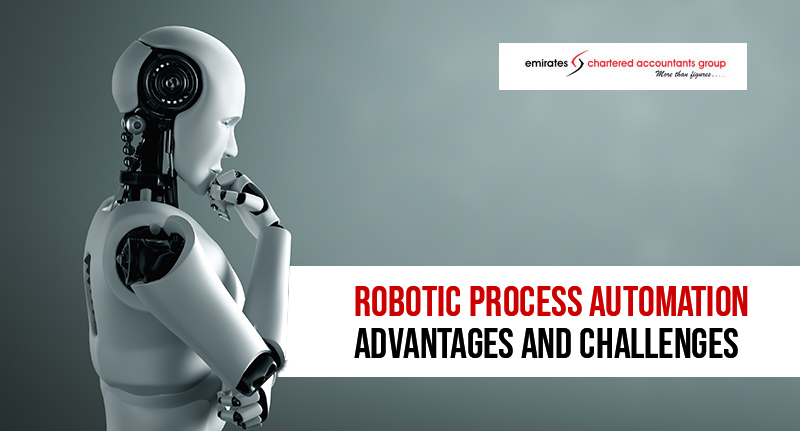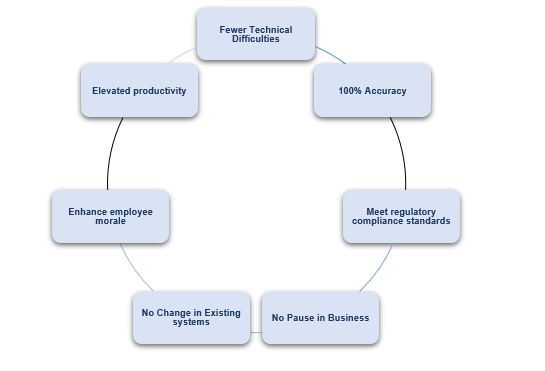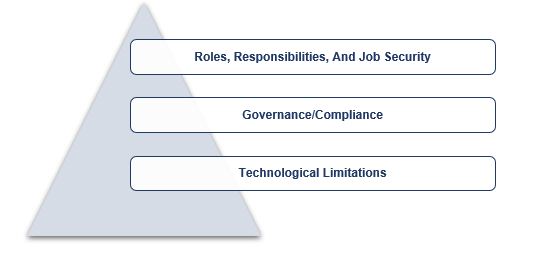
Robotic Process Automation [RPA]
Robotic Process Automation [RPA] is a software technology that imitates human actions while interacting with the digital systems performing different kinds of activities in IT applications.
In simple words, RPA is a technology that mirrors human actions on our computers. It can literally type, click, scroll, copy & paste, drag & drop, etc. Basically, whatever thing that we do on a computer can be done by a software robot.
What are the Advantages of Robotic Process Automation [RPA]?
Robotic Process Automation [RPA] has made considerable changes in the whole wide world. It provides automation solutions to every business sector which includes service, banking, insurance, BPO, telecommunication, and many more.
On top of that, RPA provides easy and user-friendly tools which can be used by business users that allow robots to be trained in order to perform their business process that does not have a complex ruling.
Robotic Process Automation [RPA] is also one of the major innovations that have been benefiting the businesses world. RPA offers a wide range of advantages to elevate productivity.
Robotic Process Automation [RPA] Benefits in Business
- Fewer Technical Difficulties: To configure a bot, it is not necessary to have programming skills. With the help of a process recorder, a non-technical person can teach the bot how to execute a previous manual step in an automated business process and integrate the bot-based automation into a larger automated workflow using a drag-and-drop process designer or with a similar tool.
- 100% Accuracy: Bots are extremely accurate and consistent. Bots are very much less susceptible to making errors than human workers.
- Meet regulatory compliance standards: Bots meet the regulatory compliance standard as they only follow instructions that are ruled for them. They are regulatory and appropriate for those kinds of businesses looking to automate their business processes.
- No Pause in Business: They can run 24/7, unlike humans. Bots can work diligently and independently without even requiring to re-activate them.
- No Change in Existing systems: RPA doesn’t require any changes to the existing systems. Bots work directly from a user interface, just like a human. This makes robotic process automation particularly useful for incorporating legacy systems, where APIs may not be immediately available, or in situations where organizations do not have the time or employee resources to develop custom code-based integrations.
- Enhance employee morale and employee experience: Employees can focus on high-impact projects that further drive growth. Businesses can provide opportunities for employees to dedicate more of their time and talent to other work with the help of robotic process automation as part of their automation toolkit.
- Elevated productivity: The pace of bots cannot be compared to that of a human; they are extremely accurately fast.
RPA Can Bring Immediate Value in Below Business Processes:
- Payroll
- Employee records
- Accounts receivable and accounts payable
- Invoice processing
- Inventory management
- MIS Report creation
- CRM data updates
- Data migration
- Vendor onboarding
Robotic Process Automation(RPA) Challenges
Roles, Responsibilities, and Job Security
- Opting for Robotic Process Automation [RPA] will shift in the roles and responsibilities of the existing IT personnel which can be quite distracting.
- There will be many routines works that will not be handled by humans, as such trimming employees will be a necessity.
- Efficiency levels up and operating costs will drop down dramatically.
- The roles of the employees will evolve as they will learn more about RPA and take more challenging works.
Governance / Compliance
- The advantages to the business will certainly be more outcome-based rather than centering on full-time equivalent (FTE) while outsourcing Robotic Process Automation [RPA].
- As an outcome, the delivery model should be closely dependent on customer business processes. This could complicate the internal governance process because if there are any unexpected changes it can impact the automated workflows.
Technological Limitations
- Outsourced Robotic Process Automation [RPA] requires providers to offer a strong, enterprise-level global solution that can provide support to the highest capacities. The robotic software technologies that depend on may be somewhat limited, but it does not mean that what they provide is a one-size-fits-all kind of approach.
- When you manage Robotic Process Automation [RPA] internally, it offers a wider range of flexibility and the comfort to choose from a wide array of platforms based more on your business needs.








